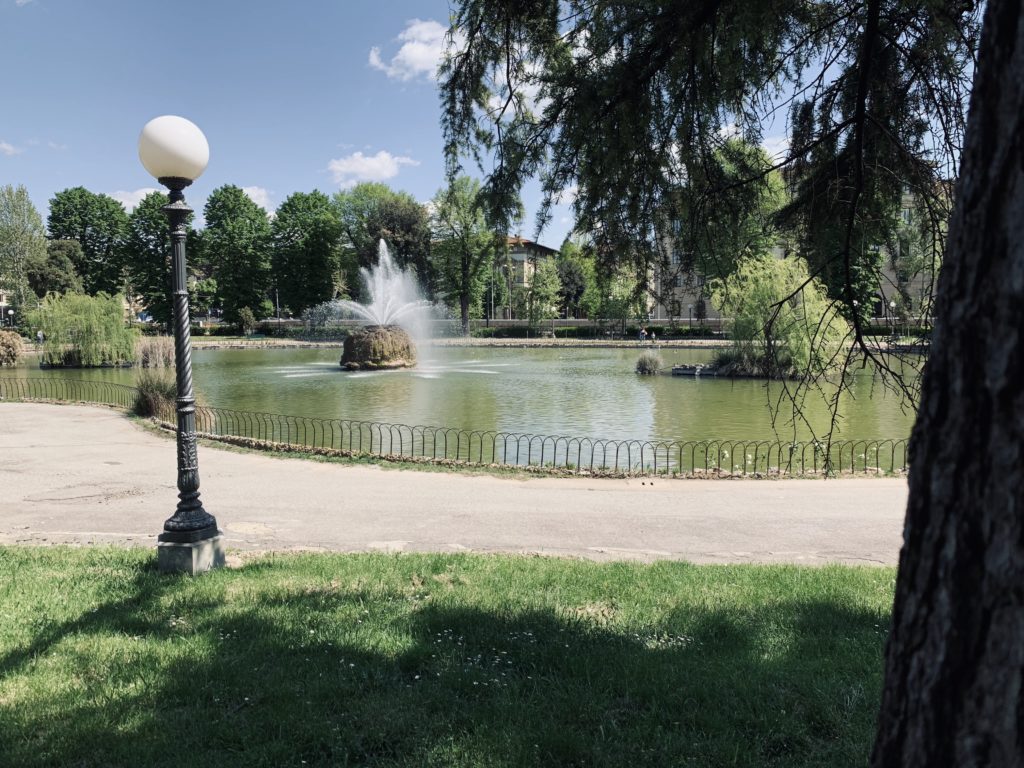When I made my decision to study abroad in Florence, Italy, it was a pretty hasty choice without much research to back it. I had known all throughout college that I wanted to study abroad, and I’ve known since I was a young girl that I wanted to visit Italy some day—mainly because I love Italian cuisine (or so I thought) and I had seen pictures of the spectacular canals in Venice, populated with couples enjoying romantic Gondola rides. When study abroad application deadlines started approaching fast, I spent a couple of hours comparing the different program options UA and other affiliates offered in Italy. However, I was mostly looking at differences between the programs and not so much about which cities in Italy the programs were based out of. I felt overwhelmed by all of the different options available to me, and eventually I told myself I needed to commit to a program already and start my applications. So, finally, I chose the one that looked the most appealing and had the most course offerings—and it happened to be in Florence, Italy.
Now, I want to preface the rest of what I have to say by first saying that I love Florence, and I have no regrets about the affiliate program I selected or choosing to study abroad here this semester. However, after being here for 3 months, I have realized many things I do love and many things I do notlove about this city, and I know that considering how little research I put into Florence before moving here for 4 months, I could have potentially ended up very unhappy with my choice of location. (No kidding—the only thing I knew about Florence when I applied to my study abroad program was that it was a less-populated city than Rome, and I had seen several pictures of the Florence skyline covered with its signature terracotta roof tiles. I had never even bothered to look at where it was located on a map of Italy before applying.) For this reason, I want to offer some advice to those of you who are in the process of choosing a city to study abroad in, and it involves doing some serious research! Trust me—you will thank me later when you find the perfect city to spend your semester or summer in!
Step 1- Choosing a country
You may already know what country you want to study abroad in. This is usually easy for students to decide, because there is likely a country you have long been interested in, maybe have relatives in, or want to practice speaking the language there. However, if you aren’t sure about the country or only have a vague idea of some places that seem interesting, I would suggest doing a little more research. For starters, some important things to investigate are: What language is spoken there? And if you are unable to speak the language, do the people of this country generally speak English too? Is the country generally safe? What are the residents’ attitudes toward Americans like? What is the food ACTUALLY like?When I came to Italy, I thought I would love most Italian cuisine, because I love pizza, lasagna, gelato, etc.! But when I arrived, I quickly realized that not all Italian food is made of different combinations of pasta, tomato sauce, and cheese like it sometimes seems in America. Many dishes that we call “Italian” in America (like Chicken Parmesan or Chicken Alfredo) are actually not Italian at all! I arrived in Florence and quickly began to notice that many dishes on the menu were full of things I don’t like to eat, like anchovies and mushrooms/truffles, and many other ingredients had unusual names that sometimes didn’t even translate to English. I have learned so much about Italian cuisine in my three months here, and I have a much greater appreciation for Italian food and the cultural differences of each region in Italy. However, I wish I had been more informed before coming here about what the food was going to be like, instead of just assuming that Italian restaurants in America provided an accurate snapshot of Italian cuisine.

Step 2 – Evaluating location and size of the city
When choosing a city to study abroad in, it is important to consider what type of city you want to live in. Do you prefer the hustle and bustle of a busy metropolitan city, or do you prefer something quieter and less populated? Research the populations of different cities you are considering, and although Wikipedia can probably give you some statistics on how many square miles the city covers, that probably will not mean much to you. Google Maps, however, is a great tool to show you what your day-to-day commute around the city might look like. Although you probably will not know where you will live until after applying, you can likely find the address of the school you would attend if you chose to study abroad in a certain city. Plug the address into Google Maps, and then try routing it to various locations in the city, like major landmarks, the nearest train station or airport, etc. Explore to discover whether there are coffee shops, restaurants, grocery stores, etc. near where you might be living and going to school. Are most things walking distance apart, or will you need to use public transportation to get around on a daily basis? This is a very important consideration, because for example, this is vastly different between Florence and Rome, Italy. In Florence, I can walk virtually anywhere in the city I could want to go in less than 30 minutes. Most of the time, I walk less than 15 minutes to get to where I want to go. However, when I visited Rome two months ago, my average walk between destinations was 45 minutes or longer, and therefore I would have needed to use public transportation regularly if I had chosen to study there instead.
If you plan to do a lot of traveling on the weekends or breaks to other cities or countries, it is extremely important to evaluate where your city of choice is in relation to other cities you want to visit, whether it has a train station (if trains are a popular means of travel where you are going), whether it has an airport, and if the airport is big/active enough to find the flights that you will need to get to other places. Florence, for example, is a fairly good center for me to travel to other cities and countries, because you can get a train to practically anywhere in Italy from the main train station, and there is an airport located about 25 minutes out of the city center. However, I have opted mainly to travel within the country by train, because the airport is small and flights tend to be expensive and/or rarely fly directly to the places I want to go. If I had been planning on flying to another country most weekends, Milan or Rome might have been a better choice for me to study abroad in because they have bigger and cheaper airports.

Step 3 – What does daily life look like in the city?
This step is probably the hardest of all the steps to research, but you must try to discover what it looks like to live in your city of choice on a day-to-day basis. This can mean several things, and you might have the best luck finding your answers to these questions by reading blogs written by other people who have previously studied abroad in cities you are considering. Some things you potentially should look for are: How are meals usually spread throughout the day, and what is typical for a meal?(For example, Italians usually only eat a croissant and have an espresso beverage for breakfast. They also usually eat dinner around 8pm, and most restaurants do not even open until 7pm. As a collegiate triathlete, I am hungry 24/7 and I am used to eating large, frequent meals at odd hours of the day, so this was a tough adjustment for me!) How do people dress?(In Italy, everyone is extremely well-dressed and fashionable at all times, so you will NEVER see a person sporting Nike shorts and a big t-shirt in public. Also, many people here wear overcoats even when it is 75 degrees out…yikes!) If you are looking to practice your foreign language skills, is the language almost exclusively spoken there, or do most people speak English? (This is a bit of a double-edged sword when studying abroad. In Florence, like in many other big touristy cities in Europe, virtually everyone who works in the city speaks English. This was great for getting around initially when I arrived in Italy only knowing a few Italian words, but now that I have been taking Italian courses for 3 months, I barely get to practice speaking Italian. This is because whenever I go into a store or café, the employees are generally used to American or English-speaking tourists coming in, so even if you order your food in Italian, if your speaking is anything short of perfect, they will detect that you are American and respond in English. It has been incredibly frustrating to attempt to speak Italian and always get a “Thank you” or “Do you want it for here or to go?” reply in English. If I had been looking for a more immersive experience where I would be forced to practice my Italian all of the time, I would have needed to study in a smaller, less tourist-frequented city in Italy.)
Finally, the most important question I think you should consider about daily life in your city of choice is: Can I keep doing my hobbies and the things that make me ME while I am there?This is something I wish I had put way more consideration into while choosing where to study abroad. Obviously, if one of your favorite hobbies is reading or writing, you can probably keep doing that anywhere in the world. But for me, as someone who is extremely passionate about triathlons (races that combine swimming, biking, and running) as well practically any other physical activity that involves being in nature (like rock climbing and mountain biking), Florence was a pretty poor choice of location for me. The city center of Florence is basically devoid of nature—trees and grass are sparse and only seen in some tiny “piazza”s throughout the city, and the tiny cobblestone streets are far too packed with cars, motorcycles, and people to be able to run throughout the city like I had planned before coming here. Although I knew opportunities for cycling and swimming would be practically nonexistent here, I thought exploring Florence through running would still give me the fill of exercising and connecting with nature that I need to stay sane. However, after only onerun through the city (during which I managed to roll my ankle on the cobblestones within 3 minutes, had to walk 10 times to wait to pass other pedestrians on the tiny sidewalks, and received about 30 judgmental or confused stares), I knew running here would not be all that I had dreamt it would be. Now, to avoid the crowded and uneven streets, I run the same 1-mile loop around an old military fort near my apartment, every single timeI go for a run. (What is even more disappointing is that in practically every other city I have visited in Italy or other parts of Europe, the streets are always full of runners and cyclists—more than I’ve ever seen in America! I obviously chose the least running-friendly city in all of Europe to study abroad in…) As beautiful as Florence has been, a little piece of me has felt incomplete because I have not been able to do the things I love most, and I constantly think about how I cannot wait to be home and ride my bike again, or go for long trail runs and open water swims.

No matter where you choose to study abroad, you will have an incredible experience and you will be able to enjoy so many wonderful things about living in a different culture. However, entire summer or semester is a long time to live in a foreign country, and the more you can prepare for it, the smoother your transition into abroad life will be. It is important that although you will be busy immersing yourself in the local culture and traveling in the surrounding areas most of the time, you must keep doing the things that make you happy here at home while you’re there (if possible). In times of homesickness, culture shock, and even when you have really great days, making sure “you do YOU” while abroad will make it all better!
